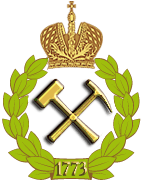St. Petersburg
St. Petersburg is the most northern city in the world with a population of more than one million people. Among the cities completely located in Europe, St. Petersburg is the third most populous, and also the first city in terms of population, not the capital.
St. Petersburg – the most important economic, scientific and cultural center of Russia, a major transport hub. The historical center of St. Petersburg and its associated monuments are included in the UNESCO World Heritage List; this is one of the most important tourism centers in the country.
Among the most significant cultural and tourist sites are the Hermitage, the Kunstkamera, the Mariinsky Theater, the Russian National Library, the Russian Museum, the Peter and Paul Fortress, St. Isaac’s Cathedral, Nevsky Prospekt. The preservation and development of the historical center of St. Petersburg is aimed at preserving cultural heritage sites.
-

The Rostral column
Located on the Spit of Vasilievsky island. In the nineteenth century performed the function of the lights of port of Northern capital. They were built in 1810 by the French architect Tom de Thomon, who decorated them with ship roses. -

Lion bridge
– this is one of the first and most beautiful suspension bridges of the city. The crossing through the Griboyedov canal was designed by engineers V. Tretter and V. Khristianovich. The bridge was opened in July 1826 and on the first day it was visited by about 3000 citizens. The chain, which keeps the bridge, hiding in the sculptures of lions. -

St. Nicholas naval Cathedral
Located on the Bank of the Kryukov canal. A magnificent monument of the XVIII century Baroque style. In the lower Church is the main Shrine of the Cathedral-the Greek icon of St. Nicholas the 17th century with a particle of his relics. And the proximity to the water makes this place romantic. -

The Bronze Horseman
Monument to Peter I on the Senate square. The name of The bronze horseman monument was later due to the eponymous poem of Alexander Pushkin, although the monument is made of bronze. Its opening took place on 7 (18) August 1782, sculptor - Etienne Falcone. The head of the statue was sculpted by his student Marie Ann Сollo. -

Smolny cathedral
The Smolny monastery complex is a real masterpiece of Russian Baroque. The famous architect Quarenghi, passing by him, every time took off his hat in deference to the genius Rastrelli. But Rastrelli only managed to bring the building under the roof. For a long time the Cathedral was unfinished, it was completed only in the 1830s. by Vasily Stasov -

The Atlantes
The gallery of the main entrance to the Hermitage is decorated in the form of a portico, which is decorated with giant figures of Atlantes. In 1844, with the participation of 150 masons sculptor A.I. Terebenev presented to the world 10 magnificent statues that symbolize the fight against gravity. The statues became a symbol of the city. -

Saint Isaac's Cathedral
Is called the Museum of colored stone. The interior walls are lined with white marble with a panel of green and yellow marble, Jasper and porphyry. The dome inside was painted by Karl Brullov, also on the interior of the temple worked VasilyShebuev, Fyodor Bruni, Ivan Vitali and many others.
St. Petersburg Mining University
St. Petersburg Mining University is the first technical educational institution in Russia, it was established by order of Catherine II on 21 October (1 November), 1773, the University brought to life Peter’s the First and M.V. Lomonosov’s ideas about training mining engineers. The date has become the birthday of the whole higher technical education in Russia.
Nowadays, more than 12 thousand students are studying mining, oil and gas, machine building, energy engineering, economics, safety measures, geo-ecology. The Mining University trains bachelors, masters and specialists (engineers) according to 32 programmes. More than 180 doctors of sciences, professors, about 600 candidates of sciences and associate professors, about 120 academicians and correspondent members of different international and Russian academies are working at 49 departments and branches of the University.
Mining Museum is a keeper of unique collections. It houses more than 250 thousand exhibits collected from all continents and more than 80 countries. It ranks top three world museums of nature science profile. The University possesses the richest scientific and technical library which accounts for more than 1.2 mln books and journals including rarities of the XV-XIX centuries.
Contacts
Location
«Saint-Petersburg Mining University»
Address: Russia, 199106, Saint-Petersburg, 2, 21st Line, Vasilyevsky Island
Transit:
From the metro station «Vasileostrovskaya» take bus No 1, 128, 152 (bus stop «Bolshoy prospect»),
From the metro station «Primorskaya» take trolleybus 10, 11, bus 7 (bus stop «Bolshoy prospect»)
Organizing committee
Address:
Russia, 199106, Saint-Petersburg, 2, 21st Line, Vasilyevsky Island
Russia, 199106, Saint-Petersburg, 82, Sredny Avenue, Vasilyevsky Island.
Anton Kornev, Yelena Gridina - in charge of registration to the Conference, abstracts and articles submission
Tel.: +7 (812) 328-86-31, +7 (812) 328-86-45
E-mail: safety-2014@yandex.ru
Alexandra Kovalevais in charge of organizational issues (payment of registration fees, financial documents provision, accommodation, transfers organization and related issues).
Tel.: +7 (812) 328-86-05,
Fax: +7 (812) 327-69-21,
E-mail: kovaleva_an@mail.ru
ACCOMODATION FOR FOREIGN PARTICIPANTS:
Multifunctional complex «Mining»
Address: 199406, 28/16 Nalichnaya street,
Vasilevsky Island, Saint Petersburg, Russia
Zaritskaya Vera - person in charge of booking the accommodation
Tel.: +7 (812) 382-00-00
E-mail: mfk.gornyi@mail.ru
Internet site: www.mfk-gornyi.ru
